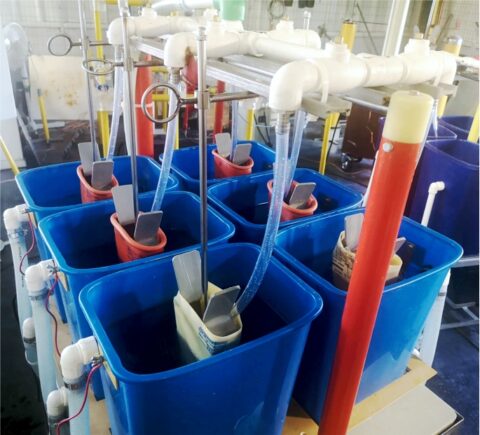Periodical inspection services for insulating personal protective equipment and insulating protective means
ROMIND T&G ownes a High Voltage testing laboratory, which is in accordance with the requirements of SR EN ISO/CEI 17025:2005 regarding electrical testing laboratories, to perform electrical tests on products intended for the protection of workers against electrical risks:
a) Measurement of the threshold voltage on capacitive voltage detectors (1 – 400 kV);
b) Dielectric testing with alternating voltage of industrial frequency (0 – 100 kV, 50 Hz) for the insulating equipment for protection against electric risk (gloves, boots, shutters, platforms, sleeves, ropes, end caps, knives, etc.), insulating sticks and capacitive voltage detectors.
Protective equipment to be subject to periodical inspection must be identified clearly with a manufacturing serial number (batch and serial number, year of manufacture), with records in the identity manual, the technical manual or the quality document accompanying the product, records to indicate both the date when they have been commissioned and the date of the last periodical inspection performed.
Electrical periodical inspections are intended to certify the maintenance of insulating properties of protective equipment (insulating gloves and boots, insulating sticks, insulating carpets, insulating platforms, insulating sleeves, insulating foils and end caps, insulating plates, insulating tools, etc.) and must be performed in strict laboratory conditions, in full observance of electric test regulations specified by standards in force and the manufacturer’s instructions.
Electrical tests for insulating equipment are performed to detect any material defects or damages occurred following the use of such material, defects that decrease or eliminate the insulating properties of equipment and which lead implicitly to the recommendation to decommission them and replace them with new equipment.
In case of medium and high voltage detectors, electrical inspections are intended to check the maintenance of tripping thresholds of optical and acoustic signalling with the detection of the presence of voltage, as well as the maintenance of dielectric properties of the housing and inspection of the correct operation of signalling (inspection of the self-testing function).
Following the performance of electrical periodical inspections, a test report is issued and in case that the inspection result is not satisfactory, a recommendation is made for the decommissioning and substitution of inadequate equipment or – if possible – a proposal to remedy the malfunctions and a repair cost estimate.




